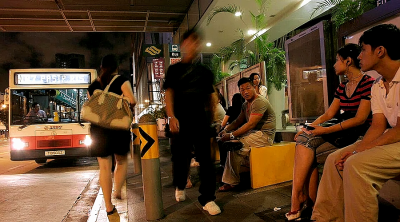The over-concentration of Japan’s population in the greater Tokyo area will not be corrected unless regional areas can attract new residents. All-out efforts must be made to revitalize regional areas.
The central government has decided on a comprehensive strategy for its initiative to revitalize regional areas through digitization.
The government has set forth a goal of balancing the net number of people moving into and out of the greater Tokyo area — defined as the capital and the three surrounding prefectures of Saitama, Chiba and Kanagawa — and all other prefectures by fiscal 2027, through such measures as improving the telecommunications environment in regional areas.
The greater Tokyo area has basically been experiencing a net population influx of around 100,000 people annually. The inflows declined in 2020 and 2021 due to the COVID-19 pandemic but began to increase again in 2022.
The population concentration in urban areas could likely increase vulnerability to disasters. The fact has also been highlighted that high population density can easily lead to the spread of infectious diseases.
At the same time, it is becoming increasingly difficult to maintain administrative services in depopulated areas. The number of marginal communities where there are no hospitals or even stores is increasing. It is an urgent task to halt the decline of rural areas.
The comprehensive strategy included a plan to accelerate the spread in regional areas of the 5G telecommunications standard with higher speeds and data capacities.
The aim of this plan is to promote telecommuting and encourage migration to regional areas. The government also seeks the expansion of services using drones and automated driving to cope with labor shortages.

There are also cases where local government efforts have been successful.
In Tokushima Prefecture, the government of Kamiyama, population 4,800, has installed high-speed telecommunications networks throughout the town and rented out vacant houses at low fees.
This effort resulted in more than 10 companies, including IT firms, moving into the town. The town is said to have achieved a net population influx. This spring, a vocational college to foster entrepreneurs is scheduled to open.
It is hoped that having local governments compete on the measures they implement will increase interest in regional areas.
However, it will be difficult to eliminate the population concentration in the greater Tokyo area solely through promoting digitization. In a survey of Tokyo residents by the Cabinet Office asking them about their concerns over moving to regional areas, the most common response was “jobs and income.”
It is essential to secure employment and higher education in regional areas for young people in order to dispel concerns about their livelihoods.
The central government has implemented various measures to date. In order to encourage companies to relocate their headquarters, preferential tax treatment has been provided and subsidies have been established to support local government projects. But it is difficult to say that these measures have been effective.
The problems with conventional efforts must be examined to make improvements.
Many people who moved to regional areas but failed to fit in with the lifestyle are said to have returned to urban areas. It is also important for administrative bodies to set up consultation systems for people who have moved to regional areas.
ADVERTISEMENT
ADVERTISEMENT








































